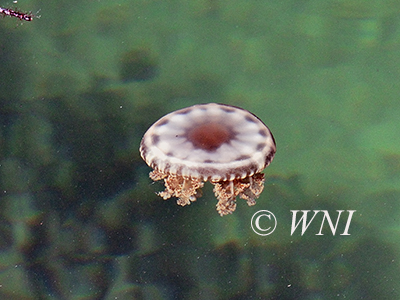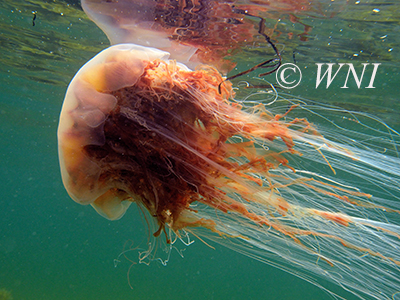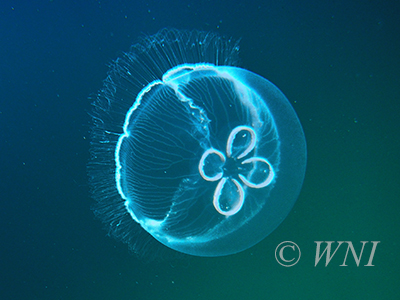.jpg) |
.jpg) |
.jpg) |
| True Jellyfish (Scyphozoa) |
The Scyphozoa include three extant orders with ca. 200 species, although at least as many species await description. True Jellyfish are found throughout the world's oceans, from the polar to the tropical waters, and down to great depths. Scyphozoans are radially symmetrical and have nematocysts on the oral arms, used for defense and capturing prey. Most species have two life history phases, the planktonic medusa, and a bottom-dwelling polyp; the medusa form being dominant. The medusae range from 2 cm to 2 m across. The bell is usually transparent, but is pigmented in some species; the oral arms trail behind the bell. Scyphozoan medusae propel themselves by contracting and relaxing muscles of the bell, pushing water out. They feed on a variety of planktonic crustaceans and fish. The tropical Cassiopeia (Rhizostomeae) receives most of its energy from the symbiotic dinoflagellates inside its body tissues.
| Cassiopeidae | ||
 |
Cassiopea xamachana | |
| Cyaneidae | ||
 |
Lion's Mane Jellyfish (Cyanea capillata) |
|
| Ulmaridae | ||
 |
Moon Jellyfish (Aurelia aurita) |
|
| Unauthorized use of our images is NOT permitted. | ||
| Hotlinking or "pinning" of our images to websites is STRICTLY PROHIBITED. | ||
| Copyright © Michael Patrikeev - All Rights Reserved | ||
| |
||





